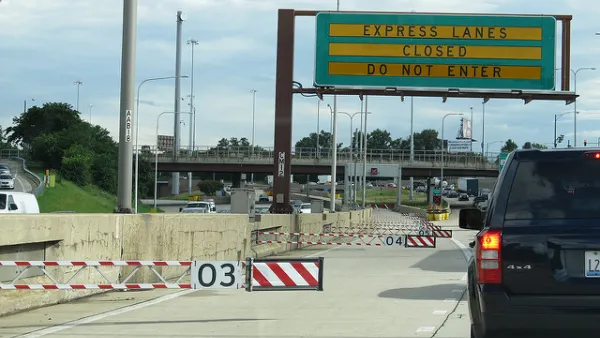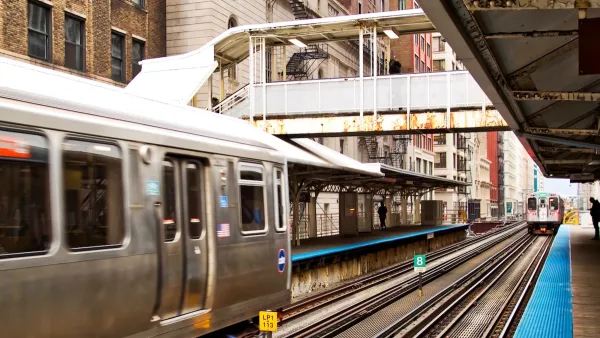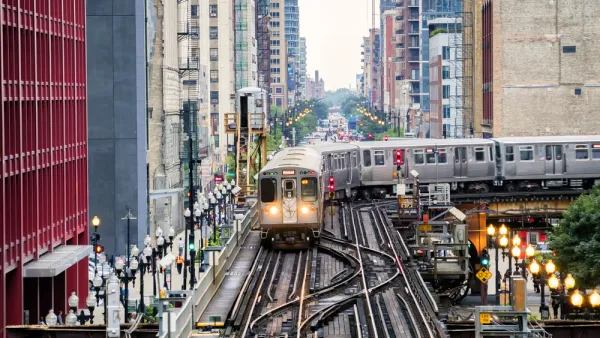Allowing buses to drive on the shoulder of highways when traffic slows has been shown to increase ridership, thus proving an important point: people will ride transit when it's a reasonable option.
Yonah Freemark provides insight into a little-known hack of the highway system to help a bus transit system operate reliably: allowing buses on the shoulder of the highway when traffic slows. Metro Transit in the Twin Cities has been using bus-on-shoulder service since 1991, expanding the routes that use the system to 300 miles of highway since then.
Freemark explains more about how bus-on-should service works and the other cities that have followed Metro Transit's example in the Twin Cities:
"The buses using highway shoulders are authorized to take advantage of those lanes when traffic is moving slower than 35 mph. When in place, the shoulder lane improves reliability and speed [pdf] of bus service, making the system more attractive. Since Metro Transit implemented the bus-on-shoulder system, regions around the country—from Seattle to the North Carolina Triangle to Washington—have implemented similar networks."
Freemark takes a closer look at the I-55 outside Chicago as a case study of bus-on-shoulder service.
Pace, the Chicago region’s suburban bus operator, introduced its own bus-on-shoulder operations in 2011 thanks to a change in Illinois state law allowing the service. The Ill. Dept. of Transportation spent $9.5 million on upgrades for I-55 on 15 miles of the highway from downtown Chicago to Plainfield, Ill., about an hour southwest of Chicago.
After ridership increased on the route, Pace has expanded service to additional routes in its system. Moreover, "Pace’s service on I-55 is performing so well that the Illinois General Assembly approved a bill last year making the original bus-on-shoulder pilot project permanent, and extended the program to make it legal on all Chicago-region expressways and tollways."
Freemark provides a lot more detail about the Pace case study, the transit benefits it achieved, and how Pace plans to expand the system in the future.
FULL STORY: Talking Transit: Bus on shoulder builds Pace ridership

Analysis: Cybertruck Fatality Rate Far Exceeds That of Ford Pinto
The Tesla Cybertruck was recalled seven times last year.

National Parks Layoffs Will Cause Communities to Lose Billions
Thousands of essential park workers were laid off this week, just before the busy spring break season.

Retro-silient?: America’s First “Eco-burb,” The Woodlands Turns 50
A master-planned community north of Houston offers lessons on green infrastructure and resilient design, but falls short of its founder’s lofty affordability and walkability goals.

Test News Post 1
This is a summary

Analysis: Cybertruck Fatality Rate Far Exceeds That of Ford Pinto
The Tesla Cybertruck was recalled seven times last year.

Test News Headline 46
Test for the image on the front page.
Urban Design for Planners 1: Software Tools
This six-course series explores essential urban design concepts using open source software and equips planners with the tools they need to participate fully in the urban design process.
Planning for Universal Design
Learn the tools for implementing Universal Design in planning regulations.
EMC Planning Group, Inc.
Planetizen
Planetizen
Mpact (formerly Rail~Volution)
Great Falls Development Authority, Inc.
HUDs Office of Policy Development and Research
NYU Wagner Graduate School of Public Service




























